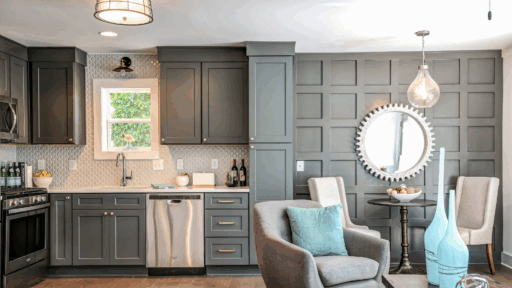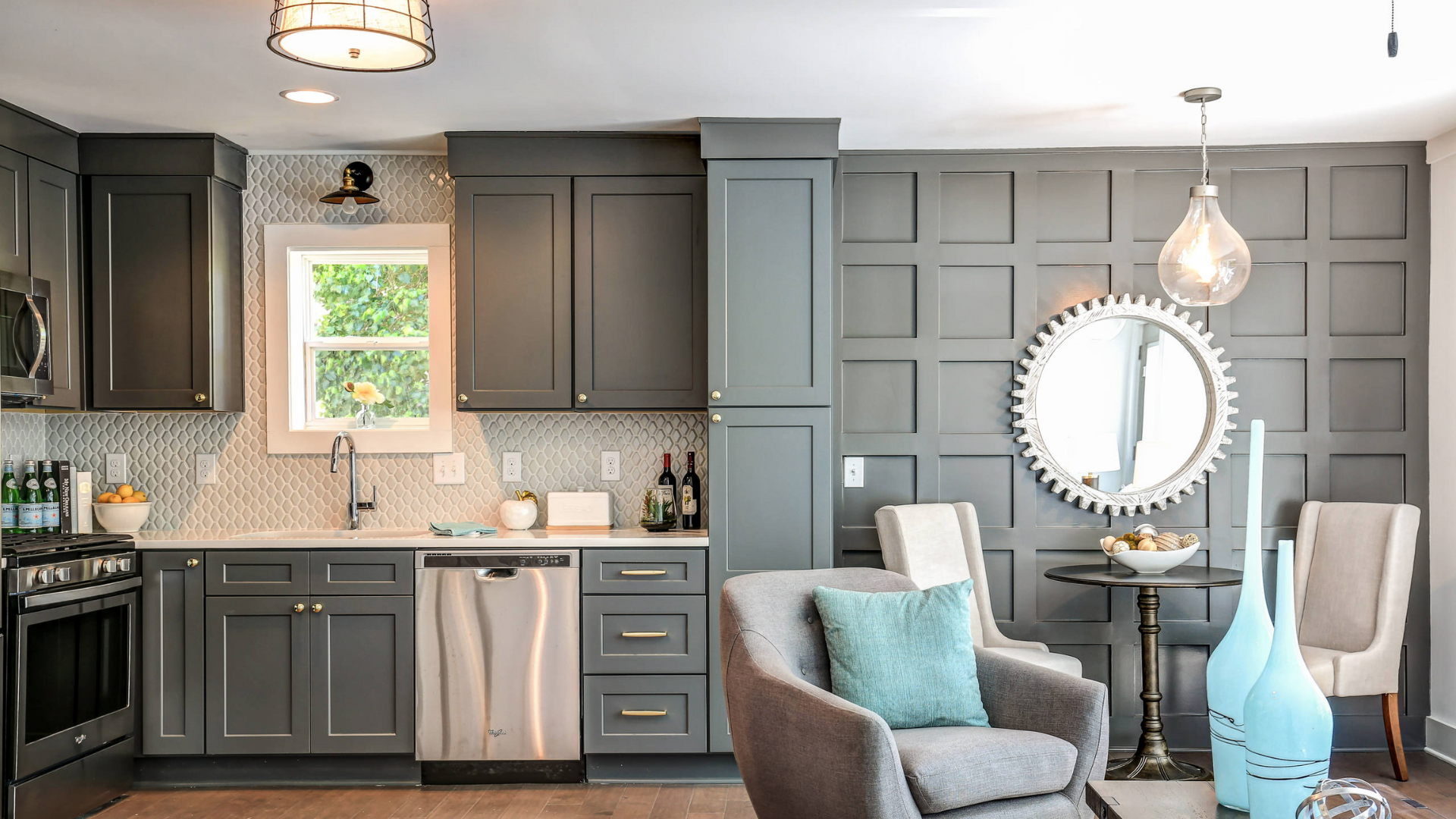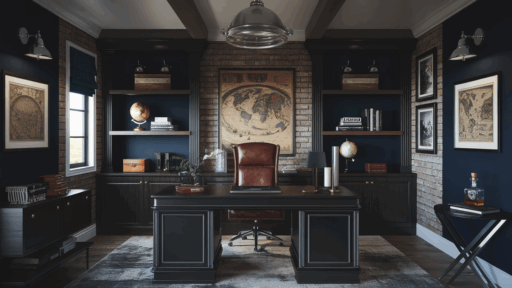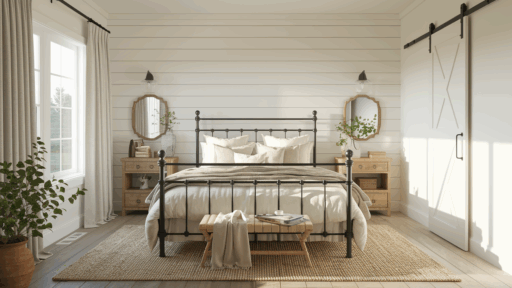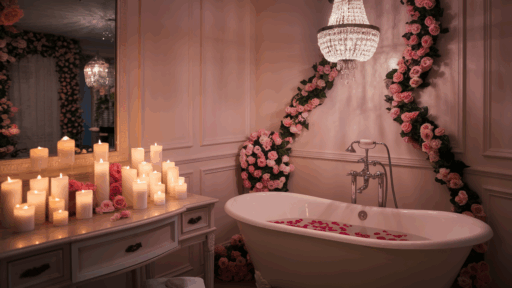Low ceilings can make a room feel cramped, dark, and closed in.
I’ve been there, and I know how frustrating it can be. But the good news is, you don’t need major renovations or a big budget to fix it.
In this blog, I’ll share simple, effective tricks that can help your ceilings look taller and your rooms feel more open.
You’ll learn how to use paint colors, lighting, curtains, mirrors, and furniture placement to your advantage.
These ideas work in all kinds of spaces, living rooms, bedrooms, hallways, and even small basements. Each tip is easy to follow and something you can try right away.
If you’ve been searching for ways to deal with a low ceiling, you’re in the right place. These suggestions are clear, practical, and made to help you solve the problem.
By the end, you’ll have the tools to turn that low ceiling into a brighter, more spacious part of your home.
Why Low Ceilings Feel Restrictive?
Low ceilings can make a room feel compressed and visually closed off.
The reduced height limits how light spreads and how the eye moves through the space, often resulting in a more confined atmosphere.
Architectural details that work well in taller rooms, such as large light fixtures or tall cabinetry, can overwhelm rooms with less height.
This limitation can influence how open or inviting a room feels.
However, the good news is that with smart design choices and subtle adjustments, even the lowest ceilings can support a space that feels balanced, comfortable, and visually taller.
Low-Ceiling Design Tricks That Really Work
Below are easy and effective ideas for transforming any low-ceiling space into one that feels bright, airy, and comfortable.
1. Use Light Paint Colors

Light paint colors, such as white, beige, or pale gray, can help create a room that feels more open. These shades reflect light, making the ceiling appear higher.
Avoid dark or bold tones, as they can make the space feel smaller. Use this approach in living rooms, bedrooms, or hallways, where low ceilings are most noticeable.
Even small updates, like this, can clearly change the way a room looks and feels.
2. Paint the Ceiling the Same Color as the Walls
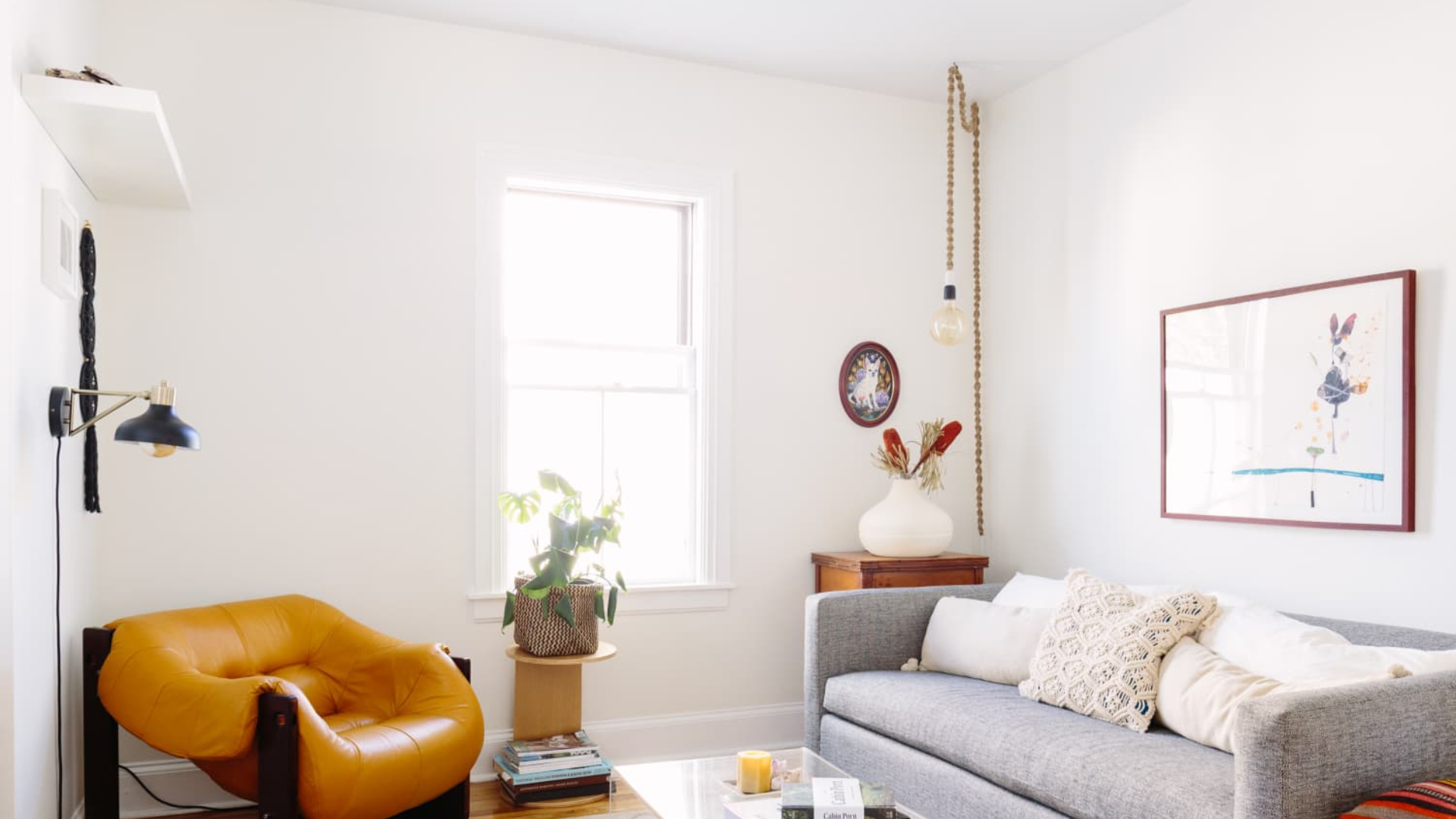
Painting both the ceiling and walls the same color removes sharp lines. This helps the room feel smoother and taller. Light colors work best for this approach.
Try it in rooms where the ceiling feels low or where trim stands out too much. Keeping everything one color blends the edges and makes the space seem larger.
Avoid strong contrasts that visually break up the room. This method works well with soft whites and cool neutral tones.
3. Try Vertical Wall Stripes
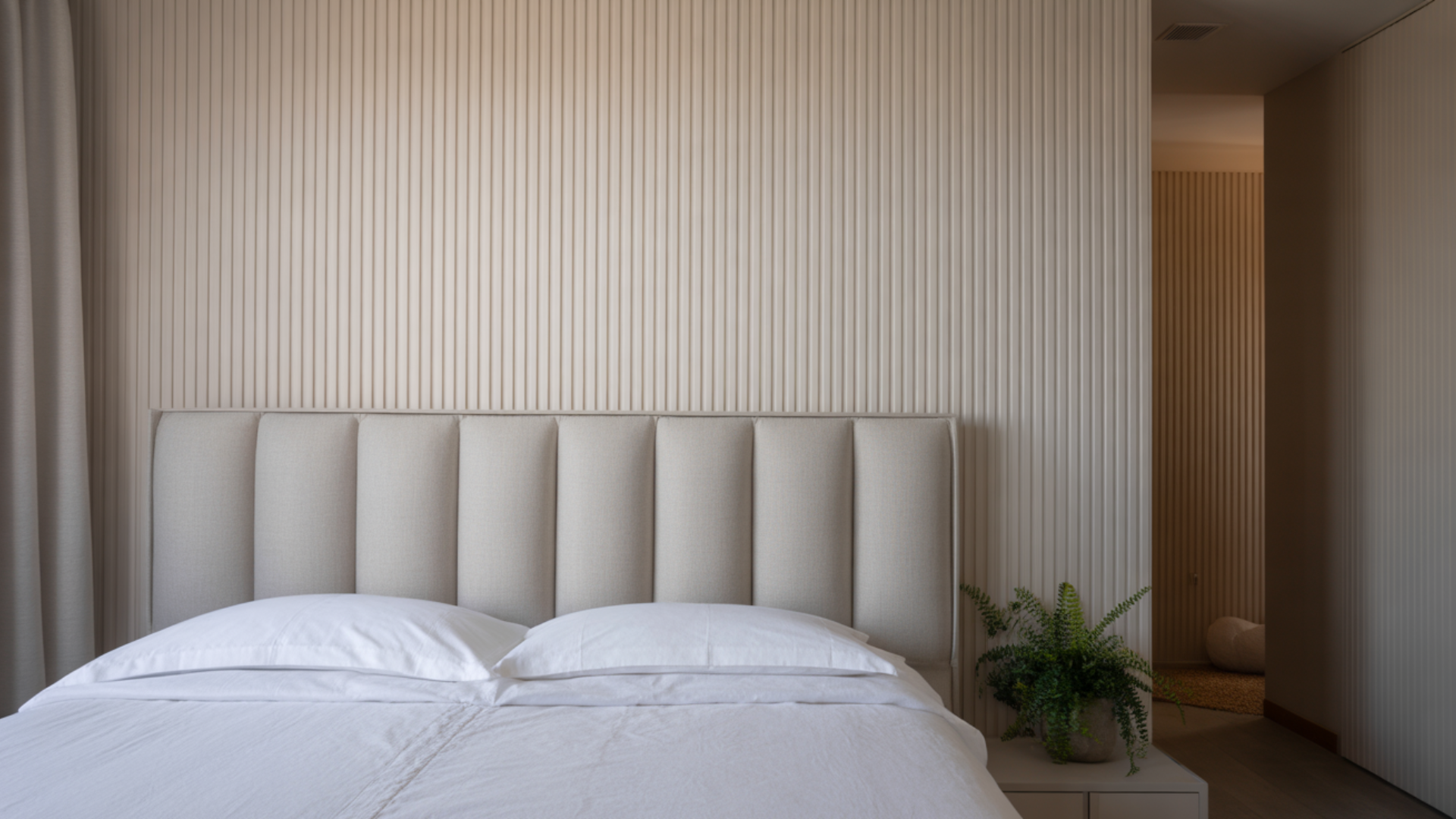
Vertical stripes create a sense of height. You can use striped paint, wallpaper, or tall patterned fabric.
Choose soft colors or narrow lines to maintain a calm and balanced design.
This works well behind beds, couches, or along a hallway wall. Vertical patterns extend the space without using extra floor area. Keep the background color light for the best effect.
4. Hang Curtains Higher
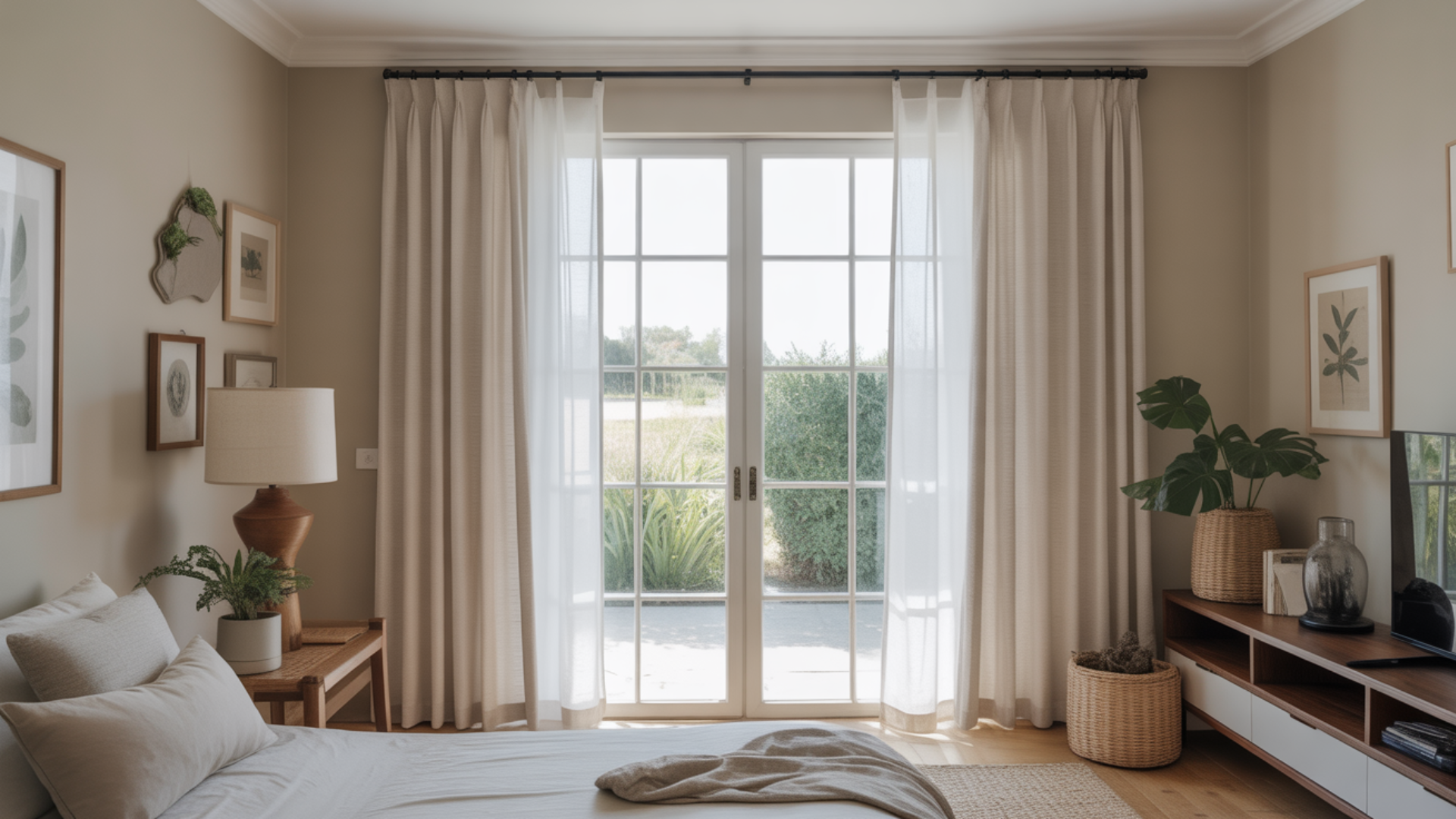
Mount curtain rods close to the ceiling. Let the curtains hang all the way to the floor. This makes the space look taller. It’s a quick way to add height to a window area.
Use plain, light fabrics that don’t feel heavy or block too much light. This method works well in bedrooms and living rooms. Avoid using short curtains that visually break up the wall.
5. Choose Low-Profile Furniture
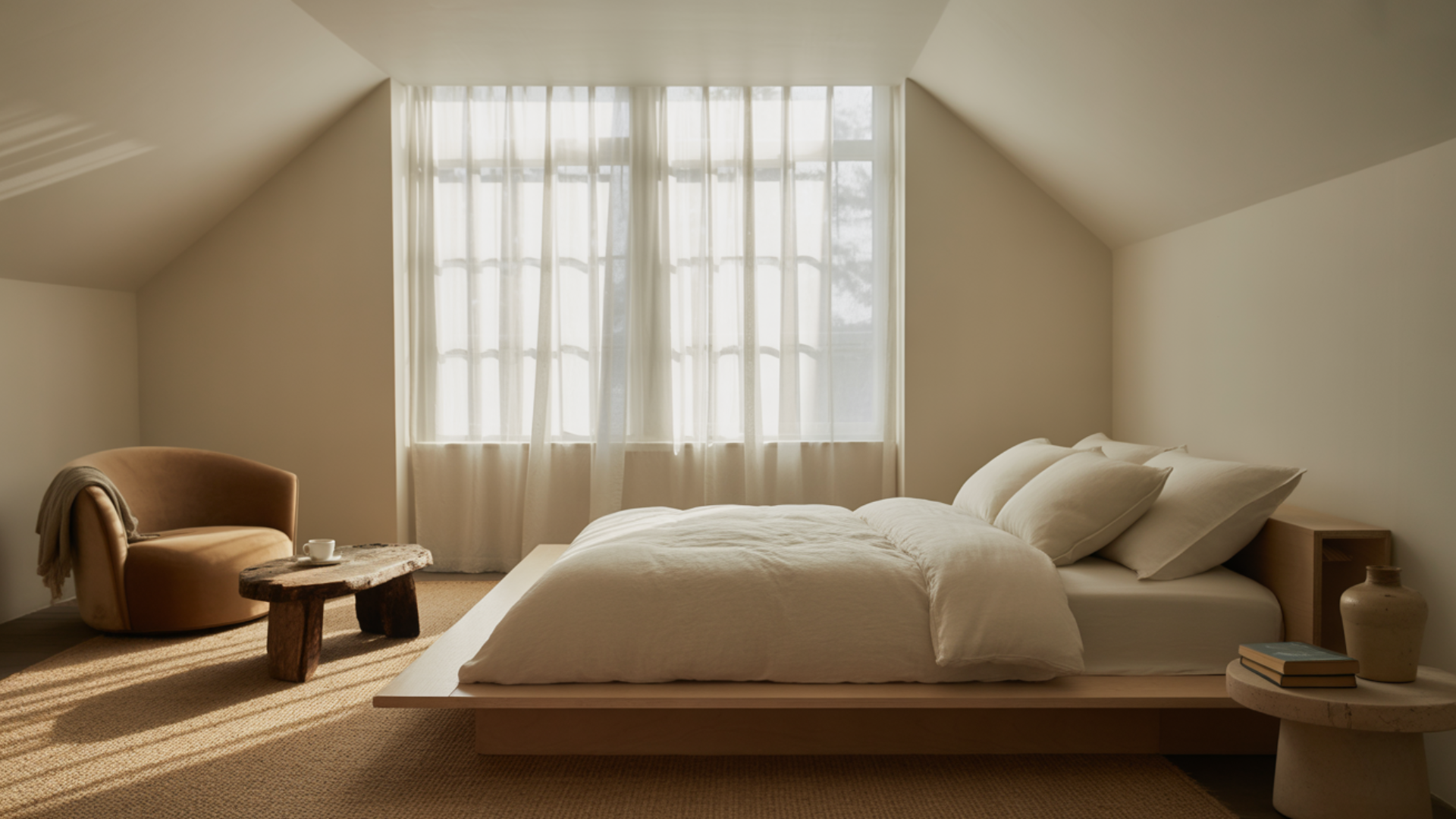
Low furniture creates more space above. Sofas and beds closer to the floor make the ceiling appear higher. Avoid tall headboards or large wardrobes.
Choose shorter tables, open shelving, and simple pieces. This makes the room feel more open and draws the eye upward.
Try it in a small bedroom or reading corner. Keep furniture light in color and low in height.
6. Use Tall, Slim Mirrors
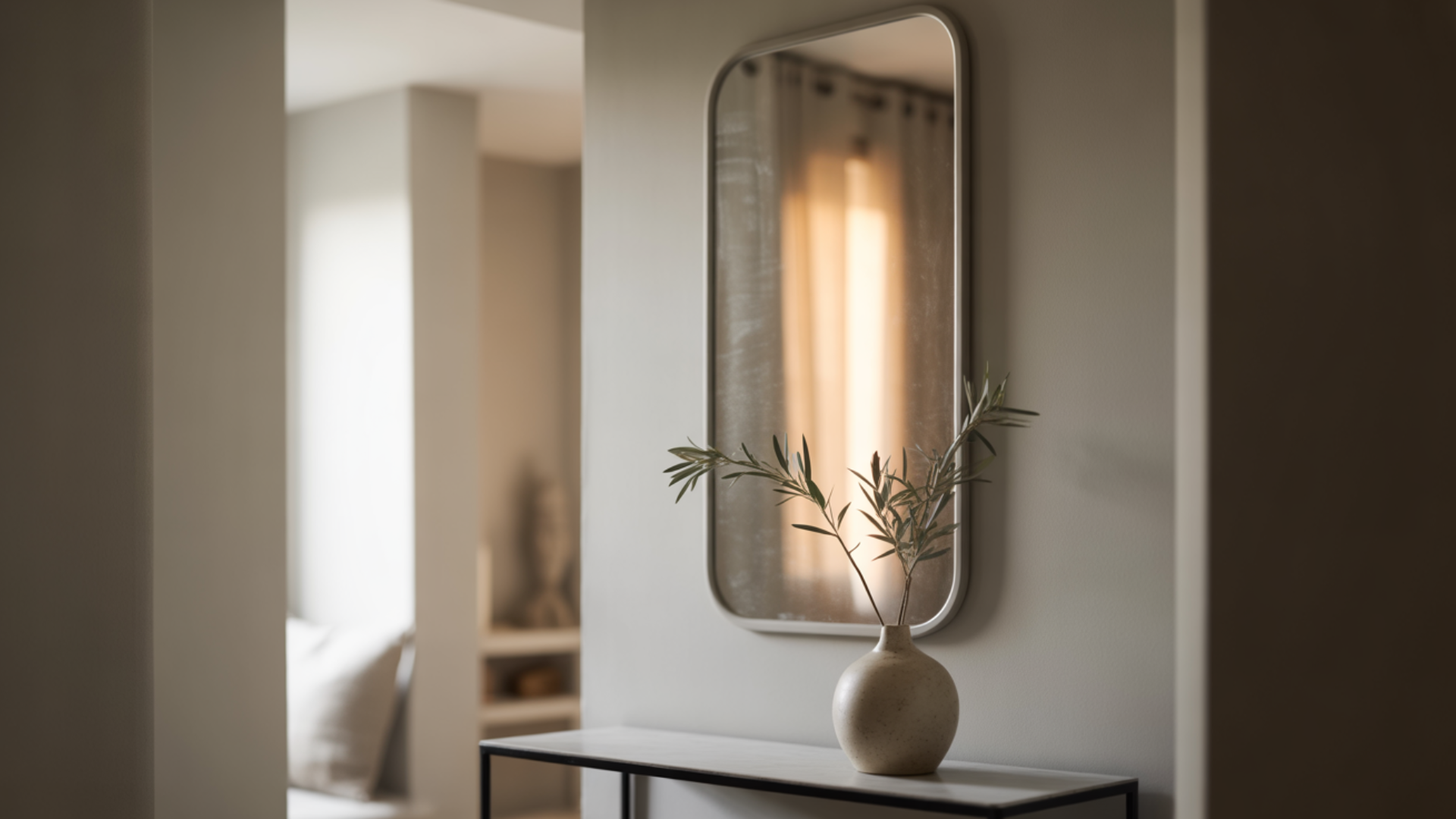
A tall mirror can reflect space and light. It guides the eyes upward. Try placing one near a window or behind a piece of furniture for better visibility.
Select a simple frame that complements the room. Mirrors help small areas appear more spacious, especially in dark corners or narrow hallways.
They work best when hung vertically. Avoid large frames that seem too heavy.
7. Go for Recessed Lighting
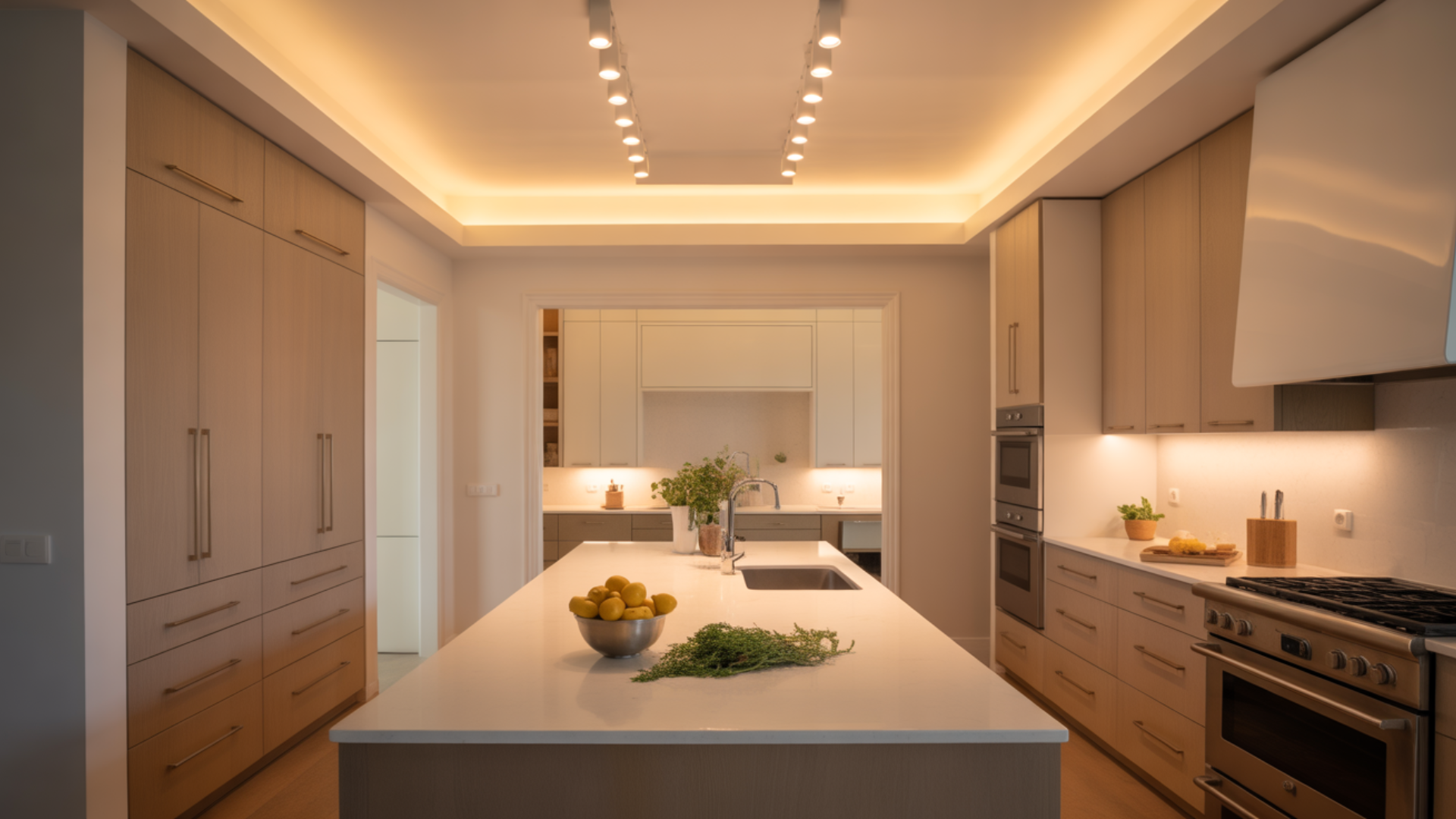
Recessed lights sit inside the ceiling. They don’t hang down or use up extra space. This makes the room look taller and more open.
Use them in kitchens, bathrooms, or hallways. They emit enough light without making the ceiling appear lower.
Avoid large fixtures that take up space. Choose a warm bulb tone for soft, comfortable lighting.
8. Avoid Big Ceiling Fans or Fixtures

Large fans or heavy lights hang too low. They make the ceiling seem closer. Use flush-mounted lights instead. These sit flat against the ceiling.
This method works well in bedrooms or dining areas. Always choose slim, low-profile lighting in small spaces. If you need a fan, go with a compact, low-clearance model.
9. Install Tall, Narrow Bookcases
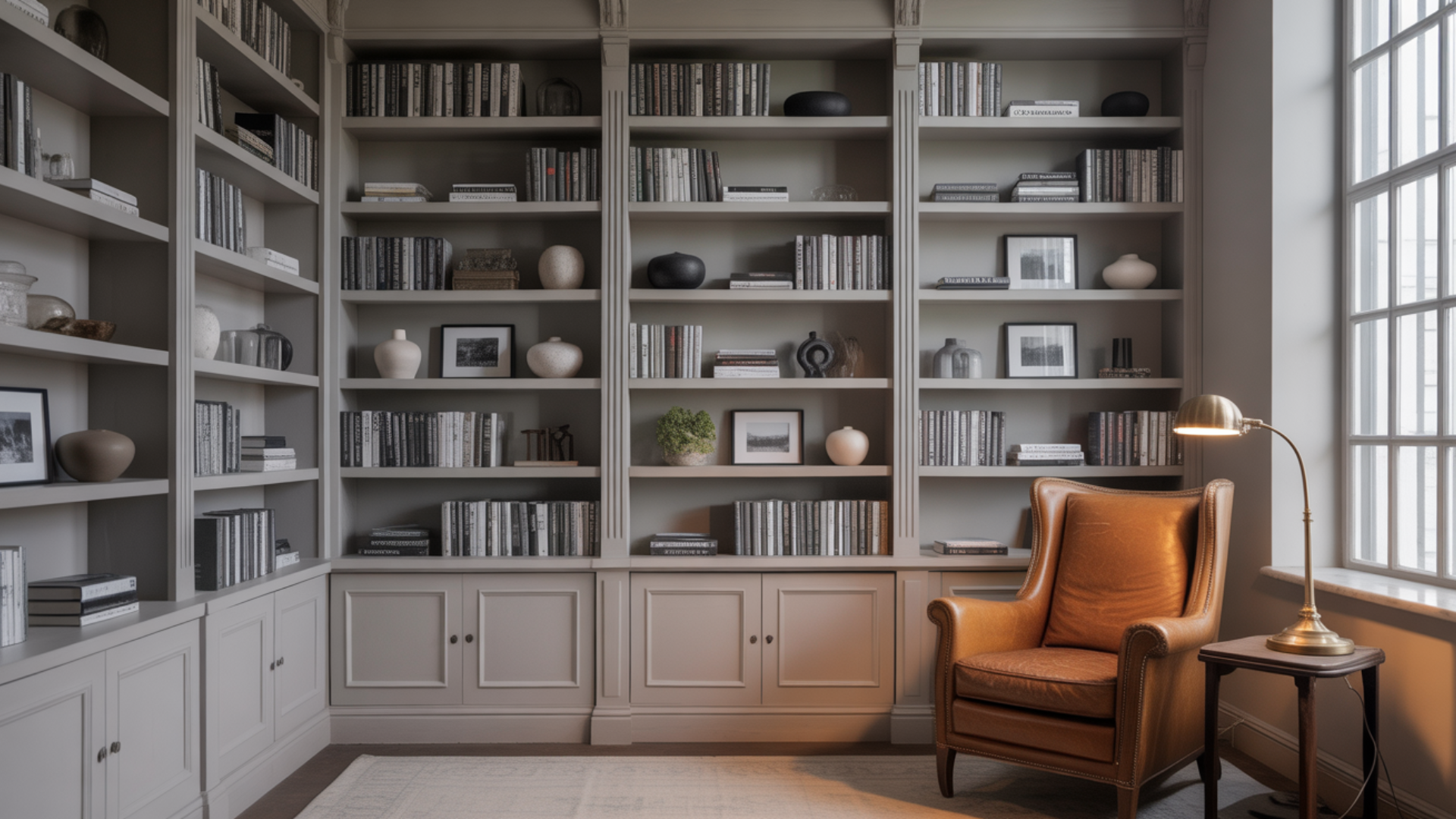
Using bookcases that reach near the ceiling not only adds storage but also highlights vertical space. Choose open or light-colored shelving to keep the room bright.
Placing them along walls guides the eye upward and adds structure to the space without making it seem closed off.
10. Pick Furniture with Exposed Legs

Furniture with visible legs looks lighter. It also shows more floor, which makes the room feel more open. Avoid bulky pieces that sit flat on the ground.
Raised chairs, sofas, and nightstands are smart choices.
Use this in small living areas or bedrooms to add space without removing furniture. Look for thin, simple legs made of wood or metal.
11. Use Upward-Facing Lighting

Lights that shine upward can brighten the ceiling. This makes it seem higher. Look for floor lamps or wall sconces that bounce light up.
Please place them in room corners to reduce shadows. It’s a simple update that changes the room’s appearance.
Avoid lights that direct everything downward. Choose soft, diffused bulbs for a comfortable atmosphere.
12. Stick to One Color Family

Using similar colors for walls, floors, and furniture helps the space flow together. This avoids strong breaks in the room and makes the ceiling less noticeable.
Use beige tones, cool grays, or soft whites for a calm, consistent look. It works well in open-plan rooms.
This method also pairs nicely with textures, such as matte walls and smooth furniture.
13. Use Minimal Ceiling Décor
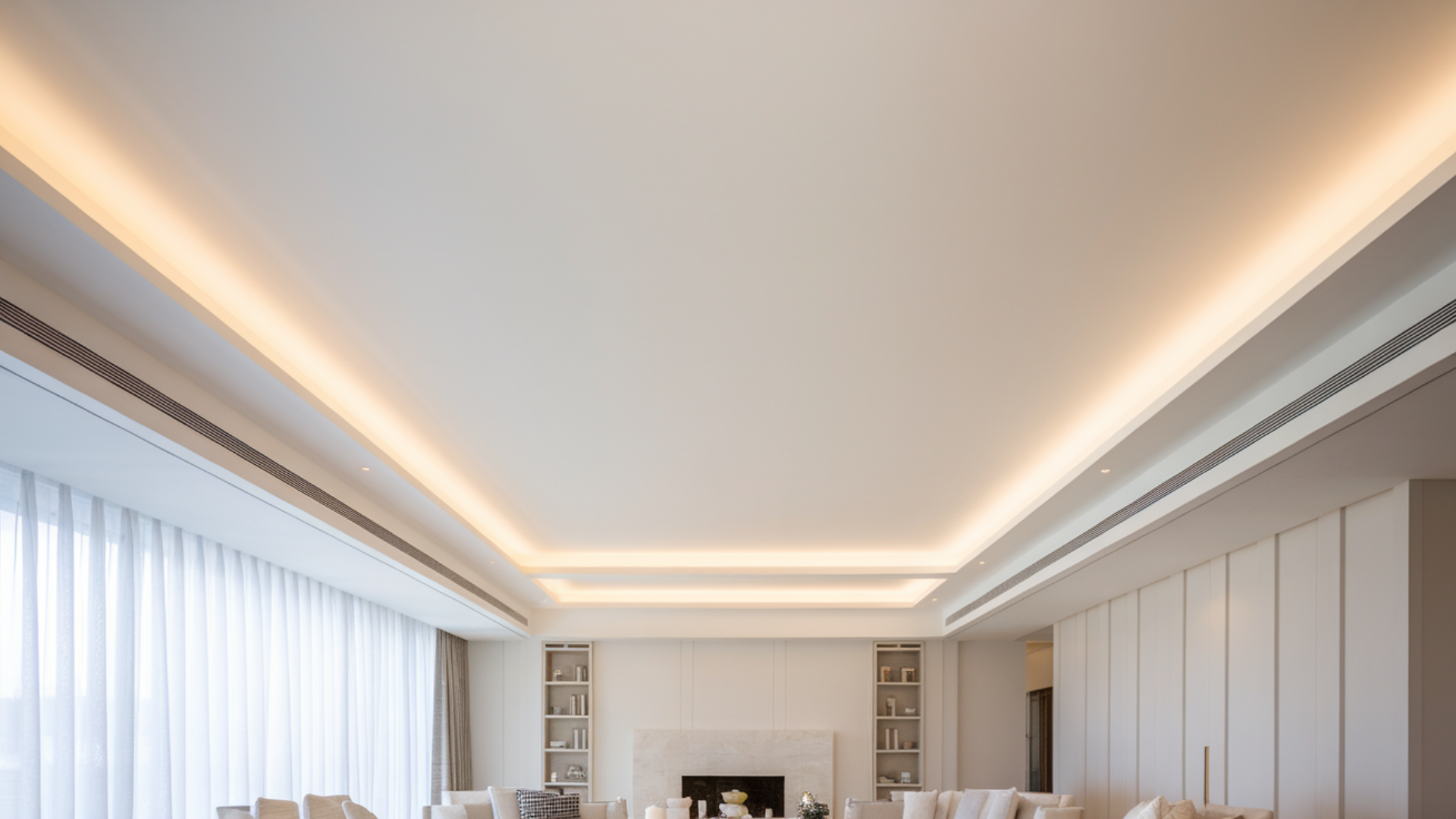
Avoid hanging numerous items from your ceiling. A clean, plain ceiling helps the room seem open. Skip heavy beams or detailed tiles.
Focus on making the ceiling stay in the background. This works well with soft lighting. Flat white ceiling paint often gives the best result.
14. Try Glossy or Satin Ceiling Paint
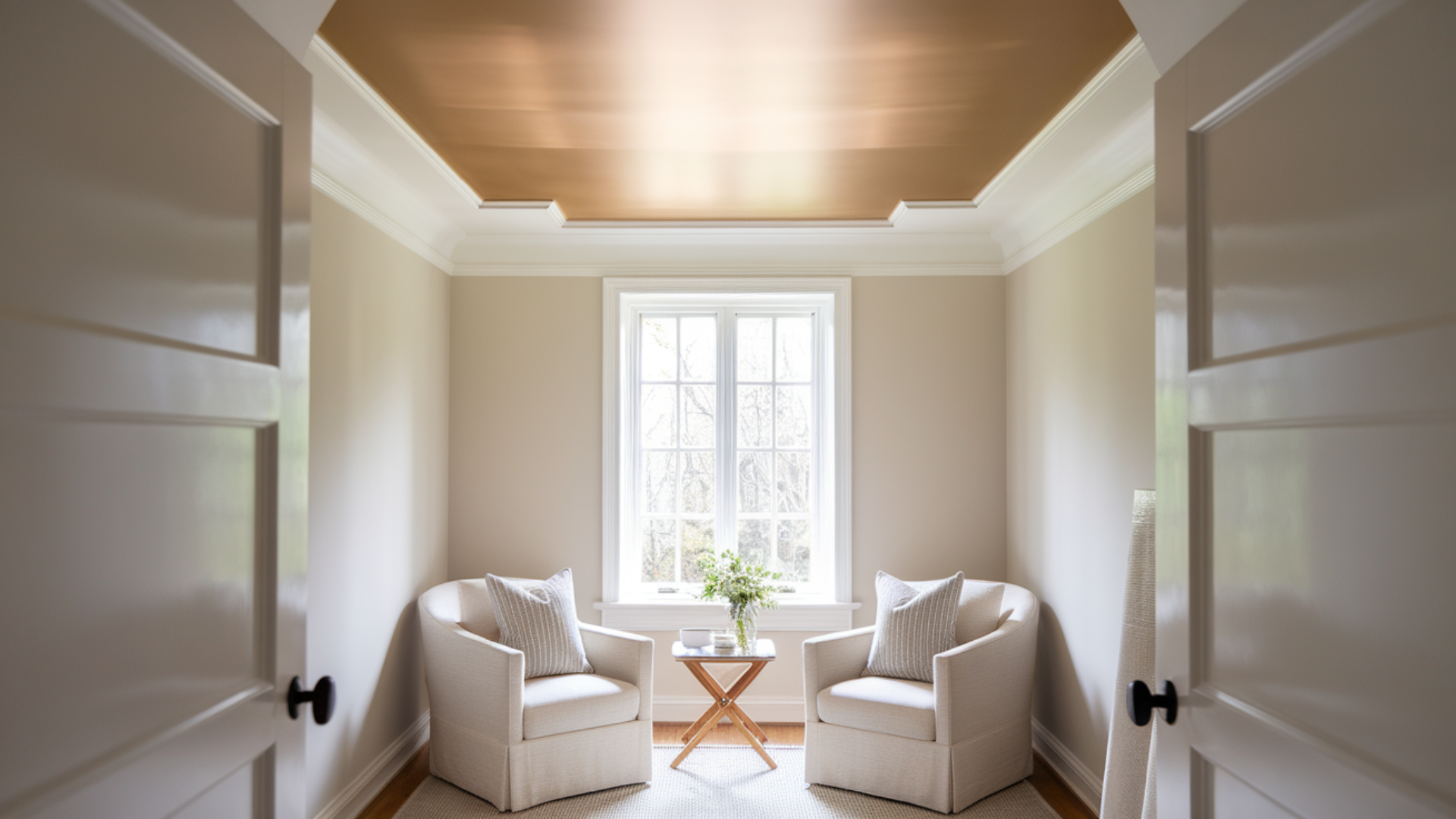
Glossy or satin paint reflects light better than flat paint. A bit of shine can help the ceiling seem farther away.
Don’t overdo the shine, though. Use a low-sheen finish that adds brightness without glare. This works well in smaller rooms. Test it in daylight before painting the entire ceiling.
15. Install Floor-to-Ceiling Shelves
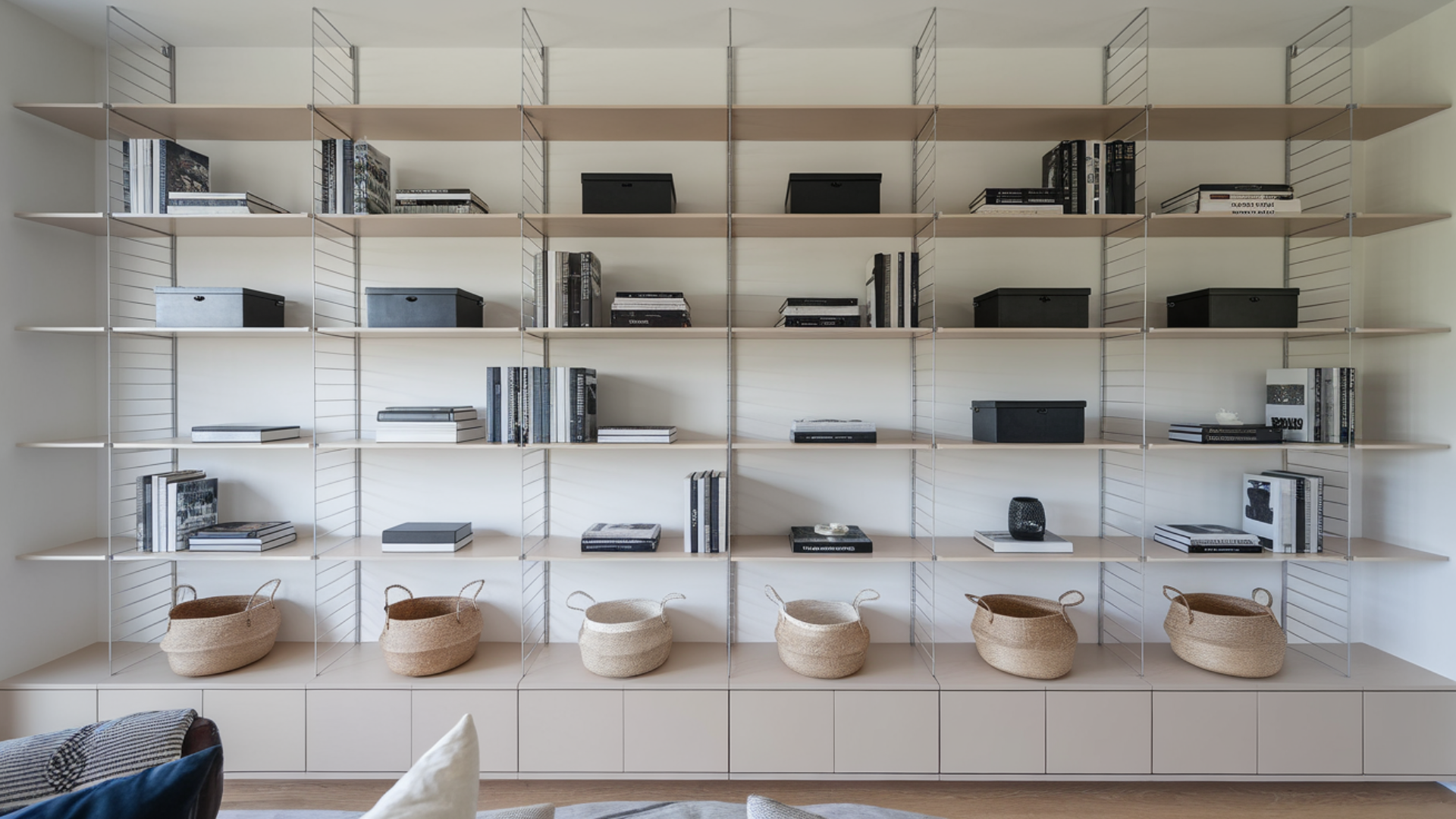
Shelves that go from floor to ceiling guide the eye upward. Use them to store items without making the space feel tight.
Keep shelves neat and not too full. Use baskets or boxes to keep things organized and reduce clutter.
This works well in offices or living rooms. Light colors and thin lines are best for open shelving.
16. Choose Narrow, Tall Décor Items
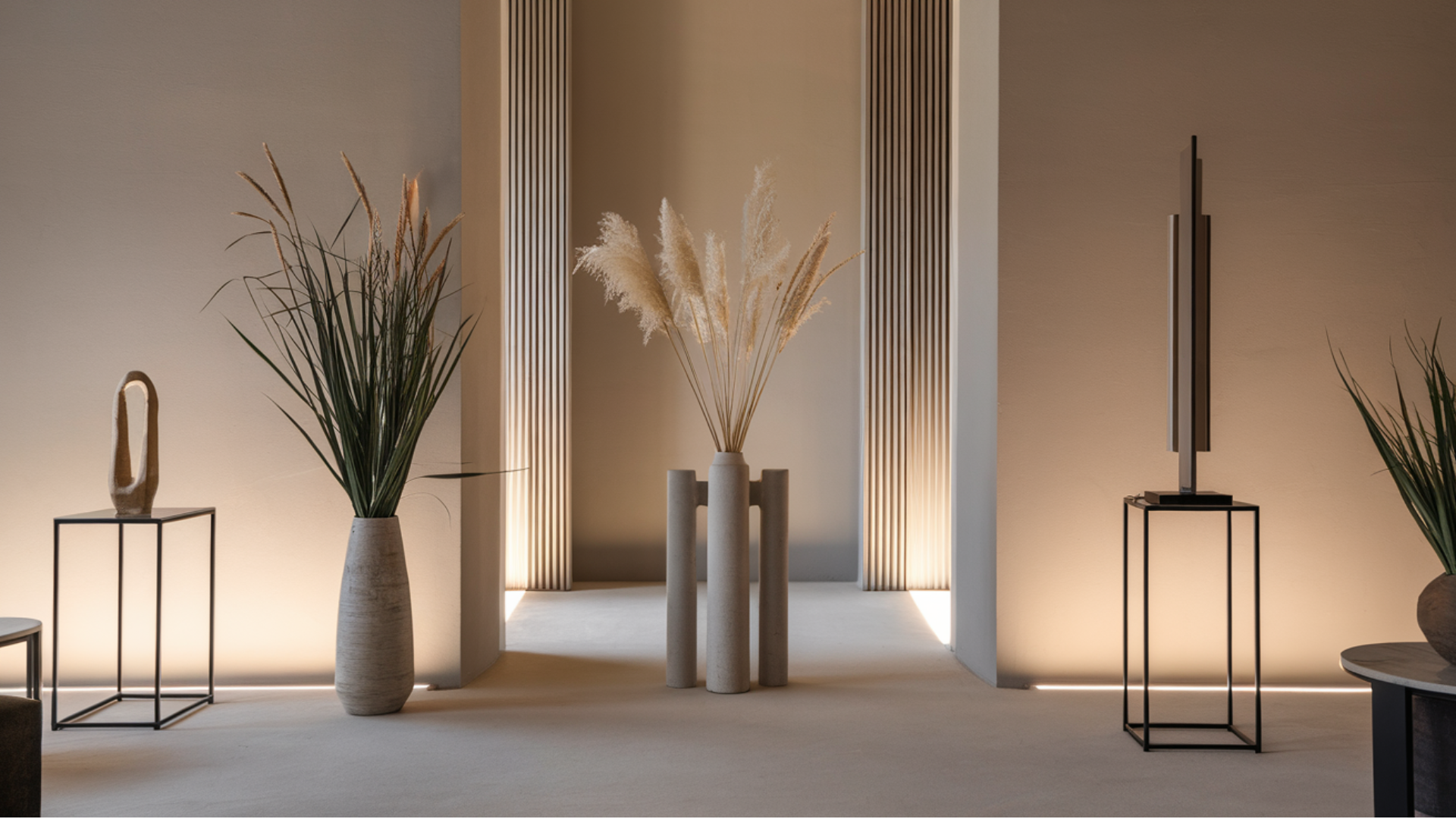
Slim items, such as tall vases or narrow lamps, help make the room look taller. Place them where they are easily visible.
Avoid wide, flat decorations. A single tall plant or sculpture can significantly alter the appearance of a space.
Please keep it simple for the best result. Avoid items that block views or clutter the space.
17. Use Ceiling-Colored Window Trim
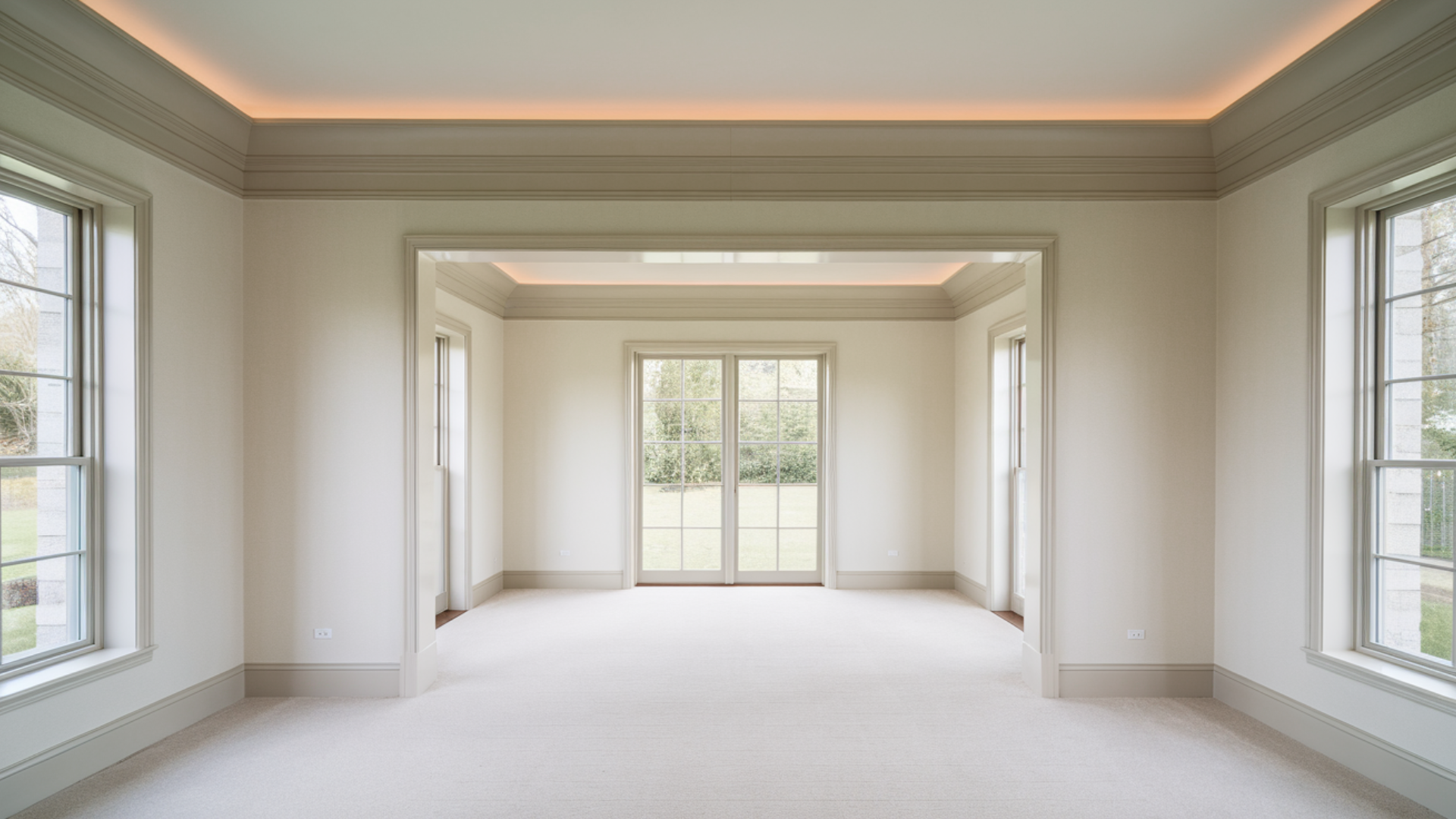
Painting your window trim the same color as the ceiling helps smooth the transition between wall and ceiling, making the upper part of the room feel more connected and spacious.
This subtle detail smooths out sharp breaks and gently guides the eye upward.
It works especially well in rooms with large windows or natural light. Combine this with light-colored walls for the most unified look.
18. Lower TV Placement Ideas for Rooms with Low Ceilings

In spaces with low ceilings, it’s best to keep your TV mounted closer to the ground.
Rather than positioning it too high, use a compact TV console or stand, or install the TV just a few inches above any existing furniture or shelving.
The key is to ensure the screen sits roughly at eye level when seated, which helps prevent neck strain.
If there’s still unused wall space above, consider filling it with small pieces of art.
19. Keep Flooring Simple and Light
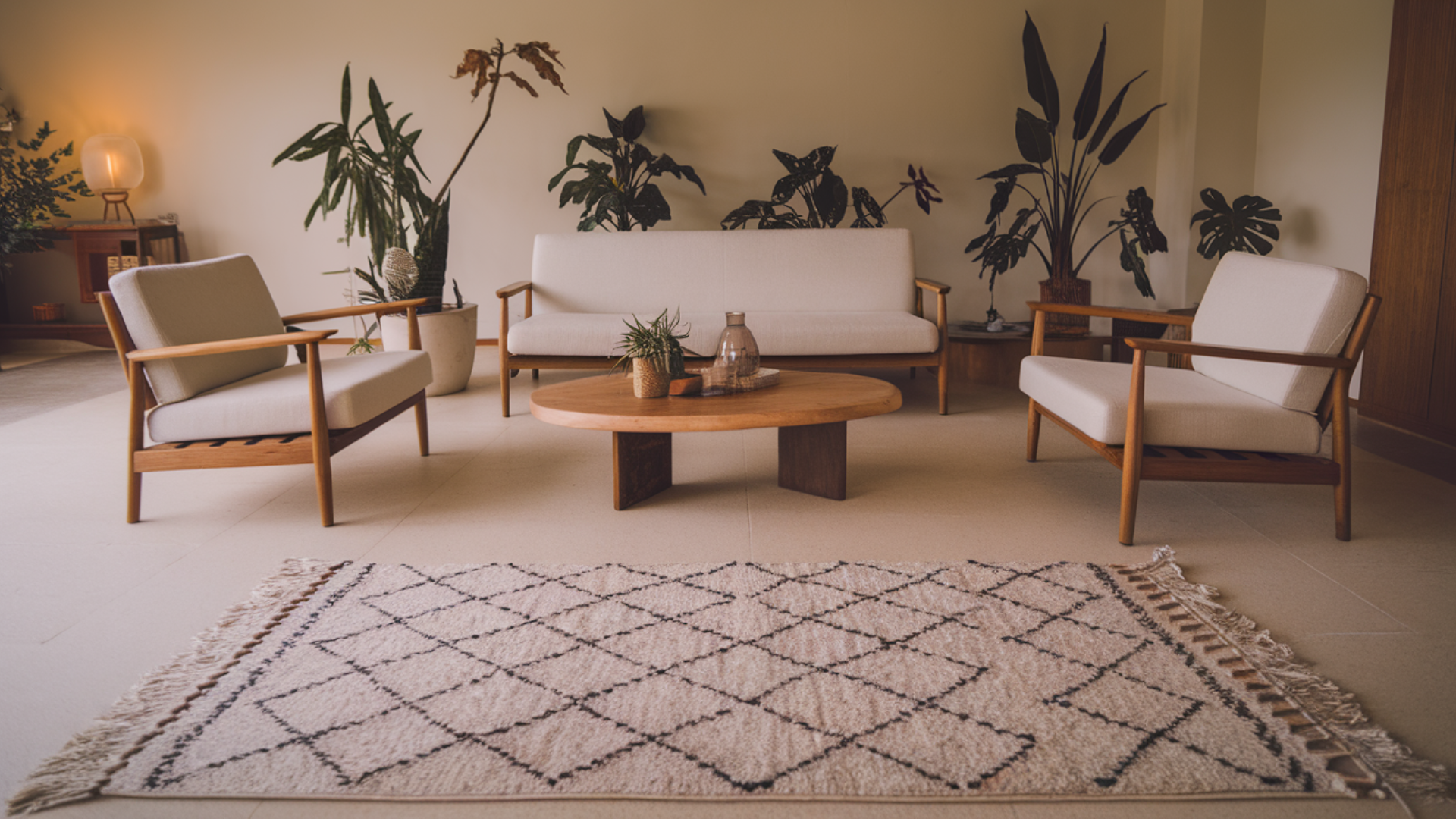
Light-colored flooring makes the room appear larger and brighter. Simple patterns or plain rugs help avoid a busy look.
Try pale wood or tiles. Rugs should be thin and have a light color. Avoid dark or heavy designs. Select flooring that subtly complements your wall color.
20. Floating Furniture

Wall-mounted furniture, such as shelves or vanities, can clear up floor space. More visible floor space makes the room seem less tight. Use strong mounts for safety.
Try this in bathrooms or small bedrooms. It gives a simple, modern look. Keep cords and hardware out of sight for optimal results.
21. Use Long Drapes, Skip Valances

Long drapes that hang straight down help make the wall appear taller. Valances shorten the wall and make the ceiling seem lower. Keep drapes plain and smooth.
Avoid bunching or thick pleats. Hang them wider than the window to create a wider space. Choose light fabrics, such as cotton or linen.
22. Keep the Ceiling and Trim the Same Color

Painting the trim the same color as the ceiling smooths the edges. This helps the ceiling blend in with the wall. It creates the look of added height.
Use this in small bedrooms or bathrooms. Avoid contrast that separates the wall from the ceiling. This works best with light, neutral tones.
23. Don’t Hang Art Too High
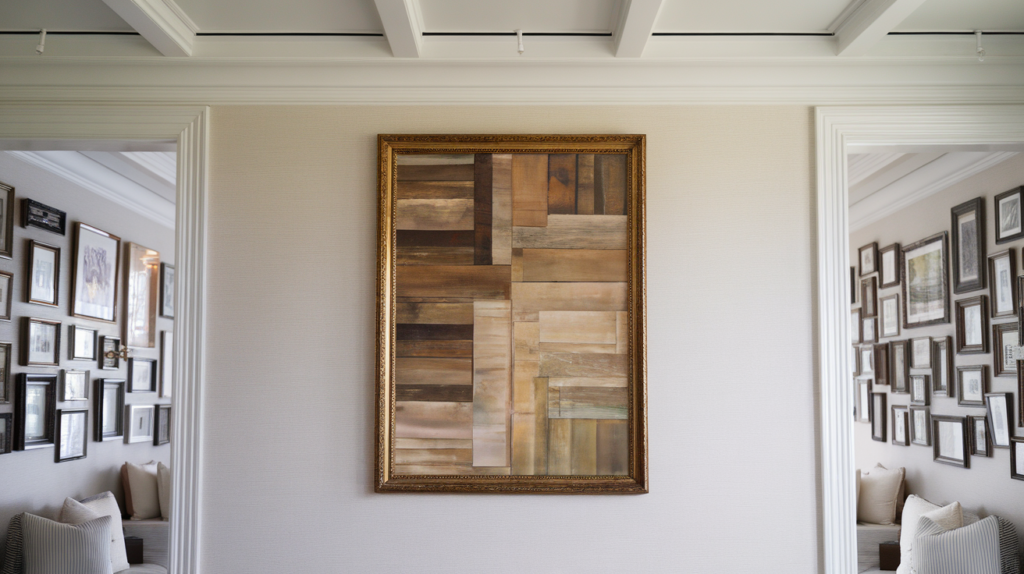
Art should be at eye level, not near the ceiling. Hanging art too high can reduce the wall space below. This makes ceilings seem lower.
Keep the center of your art about 57 inches from the floor. Use fewer, larger pieces. Avoid filling the space with many small frames.
24. Use See-Through Furniture

Clear furniture doesn’t block the view. It helps keep the room bright and spacious. These pieces work well in small spaces.
Use acrylic chairs or glass tables in tight areas. They reduce visual mess. Pair with light fabrics for added warmth.
25. Skip Heavy Crown Molding
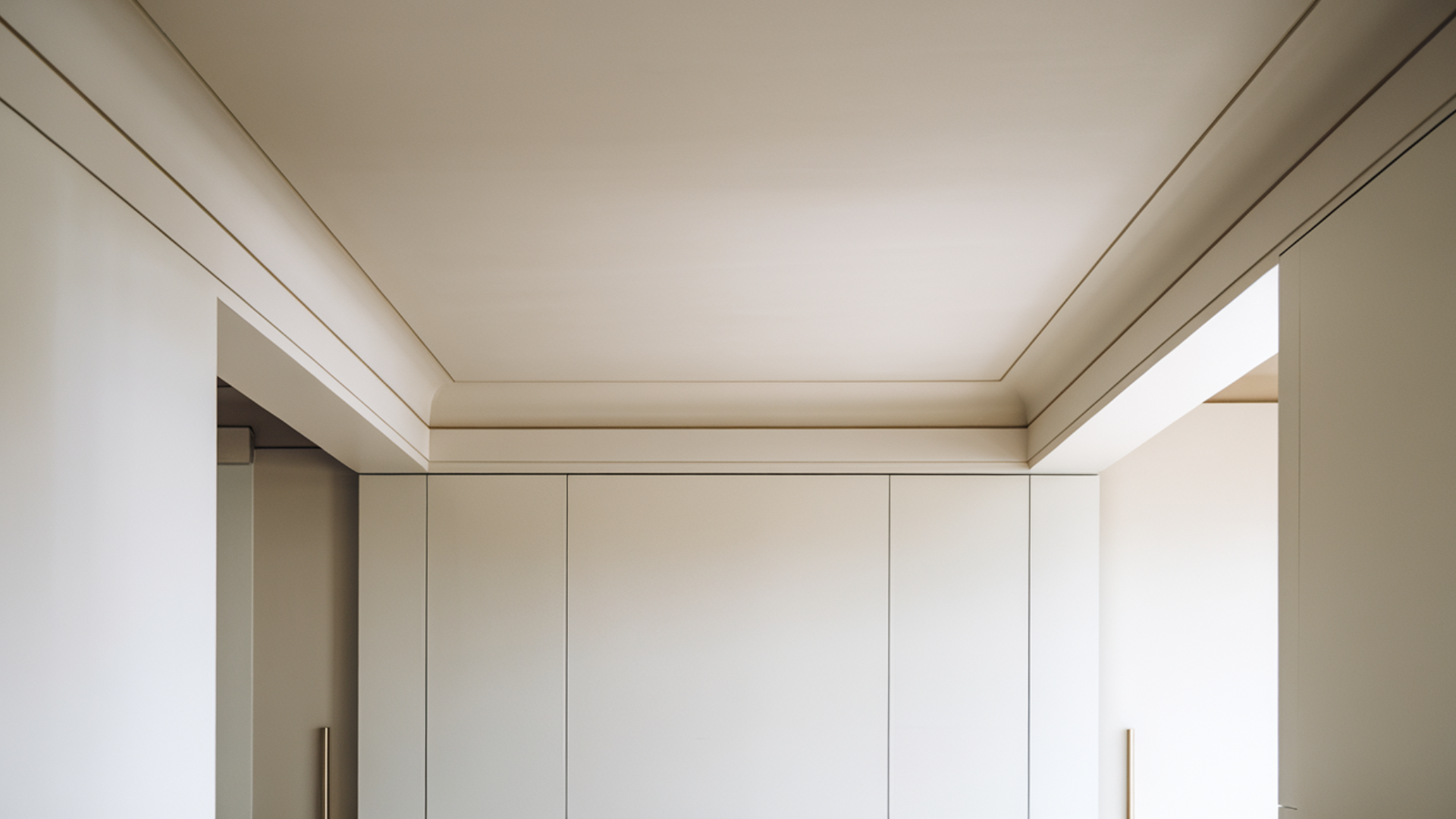
Thick crown molding can make the ceiling seem lower. Try thin trim or none at all. Smooth edges help the room appear taller.
This works well in modern or minimal design styles. Avoid bold, traditional trim. Paint the trim the same color as the ceiling for a more seamless look.
26. Decorate with a Tall Plant

Tall, slim plants bring greenery and a sense of height to a room. Choose something like a snake plant or a fiddle leaf fig. Place it in a plain pot.
Avoid wide or bushy plants. This works well in corners or near windows. Keep the area around the base clean and open.
27. Ceiling Paint
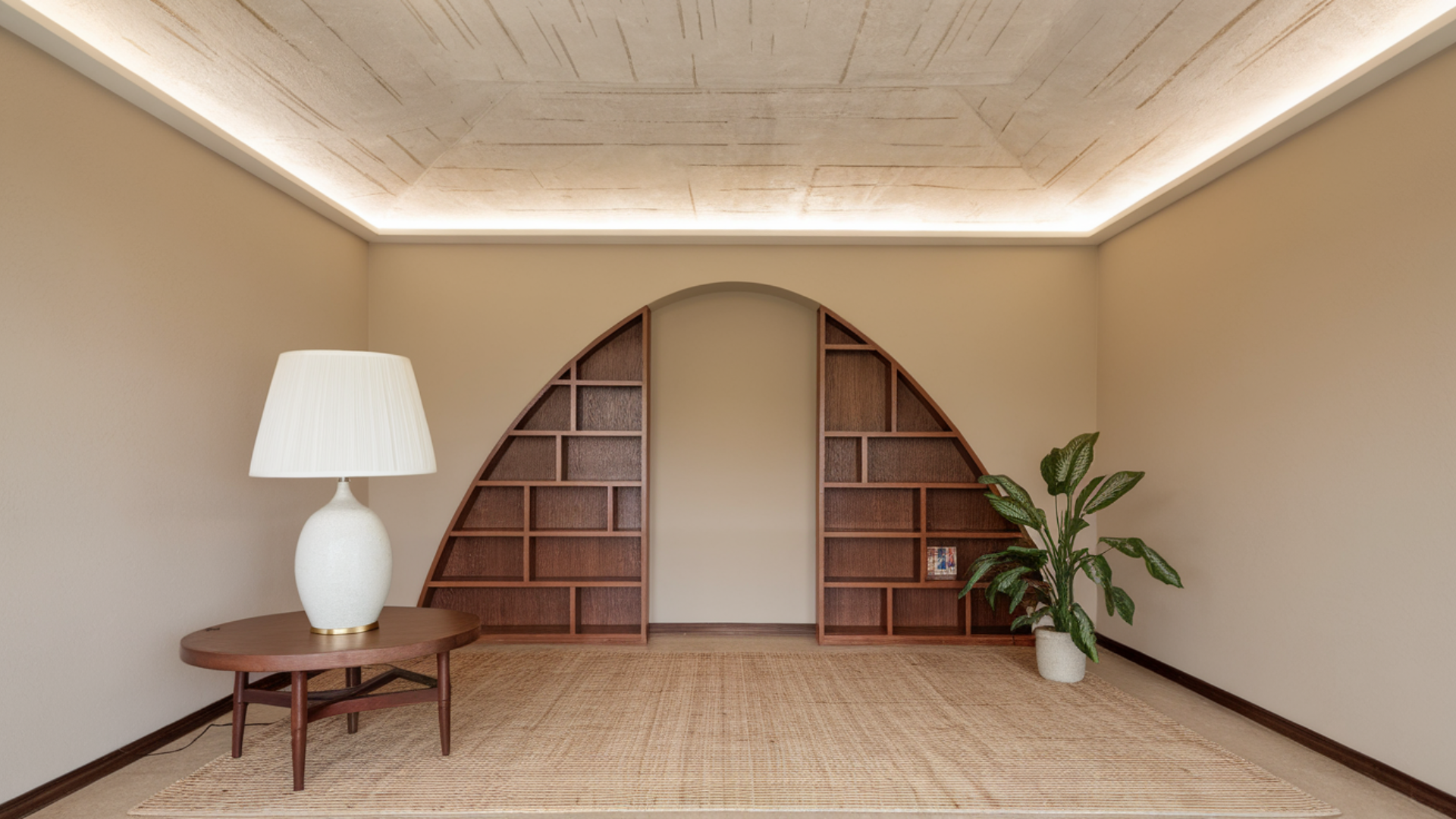
Using a lighter shade on the ceiling than on the walls can help a room feel taller and less compact. A traditional white ceiling works well, but if your wall color is soft or muted.
Choosing a ceiling tone that is just a few steps lighter can help maintain harmony.
This approach gently draws the eye upward and softens the transition between wall and ceiling, making the space feel more comfortable and open.
28. Accent Walls
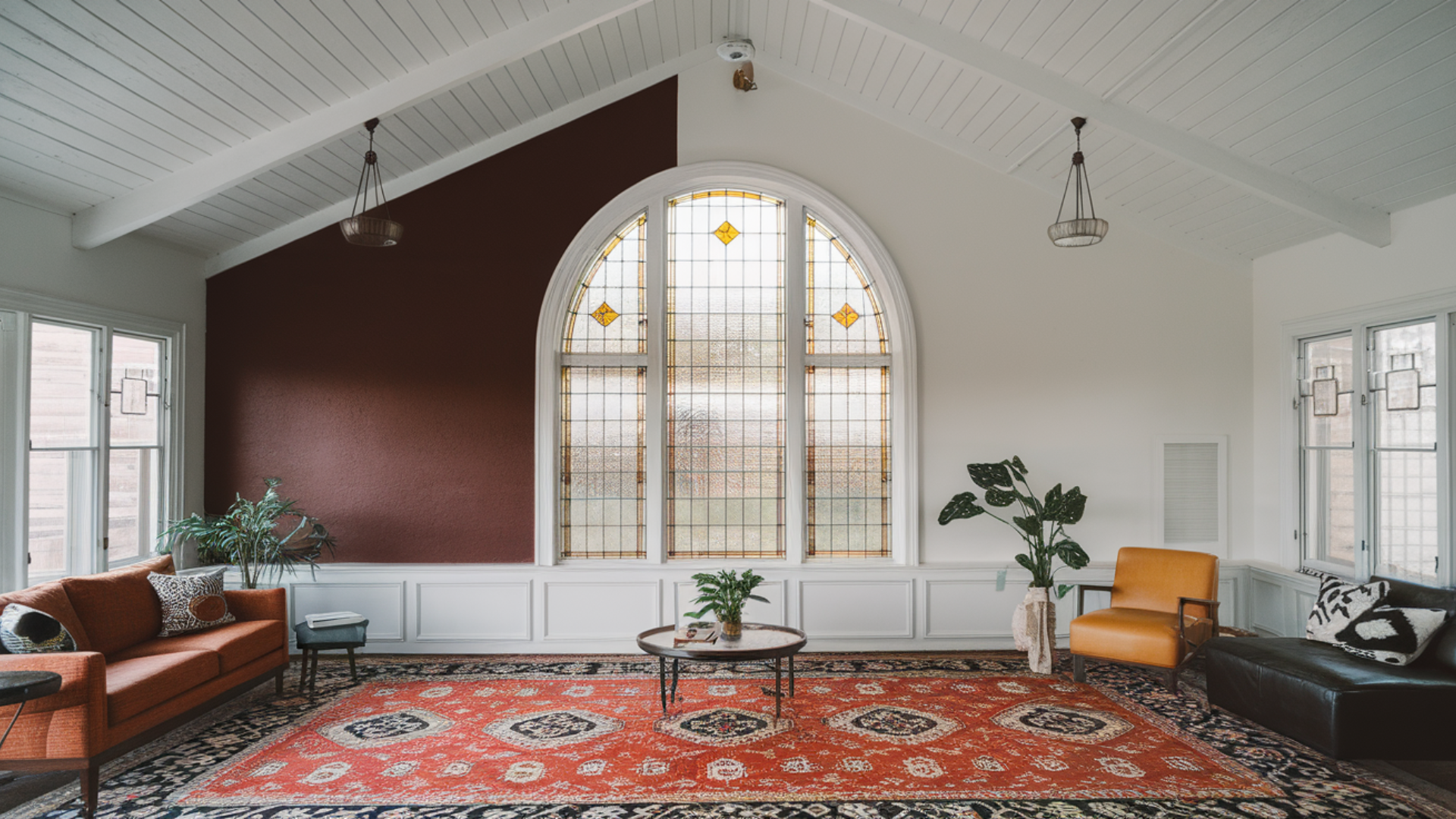
In rooms with lower ceilings, adding an accent wall can help shift attention away from the ceiling height.
Choose a wall with vertical lines or a strong design element to guide the eye upward.
This technique adds visual interest to the space without drawing attention to the ceiling.
It works best when used on one wall, keeping the other walls simple to avoid overwhelming the room.
Best Spaces to Apply These Techniques
Some rooms are more likely to benefit from ceiling-height enhancement techniques due to their original structure or use. These strategies are especially effective in the following settings:
- Basements: Often built with less headroom than standard floors, basements can feel darker and tighter. Light-reflecting surfaces and carefully placed lighting can make a big difference.
- Converted Attics: These spaces frequently have sloped or uneven ceilings. Using vertical lines and keeping furnishings low to the ground helps create the sense of more height and airiness.
- Compact Apartments and Older Homes: Architectural limitations can restrict major renovations. In such cases, visual adjustments, such as strategic curtain placement or consistent wall colors, offer effective solutions that do not require structural changes.
- Narrow Hallways and Corridors: If not styled carefully, these areas can feel tunnel-like. Uniform wall colors, minimal ceiling fixtures, and tall artwork.
Conclusion
You don’t need costly renovations to make a room with low ceilings feel more spacious.
A few smart decisions, such as using lighter paint shades, positioning curtains near the ceiling line, and opting for streamlined furniture, can significantly transform the look and feel of your space.
Lighting plays a major role too; opting for fixtures that don’t hang too low or using wall-mounted lights can help draw the eye upward.
Mirrors, vertical accents, and clutter, free layouts further support a more open atmosphere.
These simple yet effective updates are compatible with various room types, including bedrooms, living rooms, basements, and hallways.
By making a few key adjustments, you can enhance both the comfort and visual proportions of your home.
With the right techniques, even the lowest ceiling can contribute to a brighter, more enjoyable environment.

